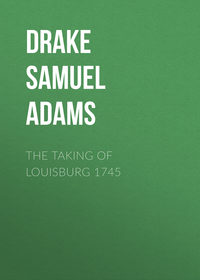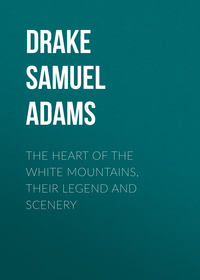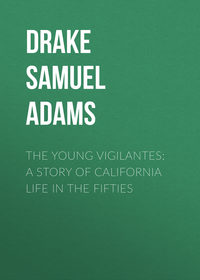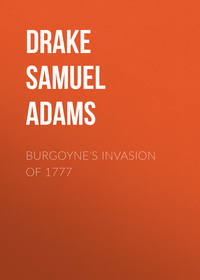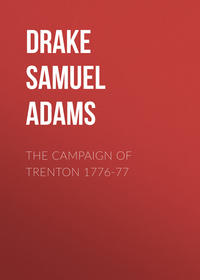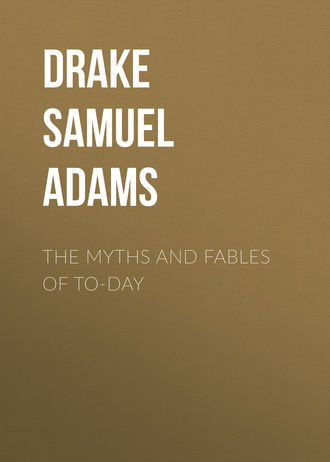 полная версия
полная версияThe Myths and Fables of To-Day
It appears from such data as we have been able to gather that the number Three and its multiple Nine were formerly held to be indispensable to the successful working of the magician’s arts. In “Macbeth,” the weird sisters mutter the dark incantation: —
“Thrice to thine, and thrice to mine,And thrice again to make up nine! —Peace! – the charm’s wound up.”And yet again, when concocting their charmed hell-broth, while awaiting the coming of the ambitious thane to learn his fate of them, the mystic rite begins by declaring the omens propitious: —
“1 Witch. Thrice the brinded cat hath mewed.2 Witch. Thrice and once the hedge-pig whined.”With the Romans, three handfuls of salt cast over a dead body had all the virtues of a funeral. Pirates were formerly hung at low-water mark and left hanging there until three tides had overflowed them. Shakespeare makes Falstaff say: “This is the third time; I hope good luck lies in odd numbers.” Even now, the cabalistic phrase “third time never fails,” prompts the twice unsuccessful candidate for fortune’s favors to renewed and more vigorous effort. In short, there seems to be no end to the virtues inherent in odd numbers.
But as all rules have their exceptions, so with this prophetic rule of three, the fates would seem to have ordained that it might be made to work both ways. Simply by keeping one’s eyes and ears open one sees and hears many things. An enterprising news-gatherer jots down a bit of superstition touching the fateful side of the rule in question that came to him in this easy sort of way: “I heard,” he says, “a most sensible person, the other day, exclaim because Queen Victoria had been obliged twice to postpone her trip to the south of France, once on account of the unsettled state of affairs over there, and again because of the unsettled state of the weather. ‘The third time will be fatal to her,’ added this cheerful individual; ‘you just mark my words.’”
It is nevertheless true, however, that the cabalistic number Thirteen stands quite alone, so far as we are informed, as the sombre herald of misfortune. But here, as elsewhere, the exception only goes to prove the rule.
A gentleman holding a lucrative office under the government once told me that two of his clerks wore iron finger rings, because they were supposed to be lucky. It is a matter of general knowledge that certain gems or precious stones are worn on scarf-pins, watch-chains, finger rings, or other articles of personal adornment solely on account of the prevailing belief in their efficacy to ward off sickness or disease, prevent accidents, keep one’s friends, – in short, to bring the wearer good luck. This branch of the subject will be more fully treated of presently.
More unaccountable still is the practice of wearing or carrying about on one’s person a rabbit’s foot as a talisman, that timid little animal always having been intimately associated with the arts of the magician and sorcerer. But it must always be bunny’s hind foot. The insatiate passion for novelty, we understand, has now installed a turkey’s claw in the room of the rabbit’s foot, to some extent, showing that even credulity itself is the obedient slave of fashion. Of course neither the rabbit’s foot nor turkey’s claw is worn in its natural rough state, but under the jeweller’s skilful hands, tipped with gold or silver and set with the wearer’s favorite gem (topaz, amethyst, or whatever it may be), the charm, or mascot, becomes an ornament to be worn, either suspended from the neck, the wrist, or belt, or as a clasp for the cape. The practice of wearing a caul,9 or an amulet blessed by the priest, clearly denotes that here rich and poor meet on common ground. It is not proposed, however, to treat of those beliefs which may be directly traced to the teachings of a particular church, or that have become so embedded in the faith it inculcates as to be an inseparable part of it The Protestant world, or that part of it we live in, is intrenched in no such stronghold.
To continue the catalogue: —
A black cat, without a single white hair, is a witch of the sort that brings luck to the house. Keeping one also insures to unmarried females of the family plenty of sweethearts.
A branch of the mountain ash kept in the house, or hung out over the door, will keep the witches out.
Good luck is frequently crystallized in certain uncouth but expressive sayings, such, for example, as “nigger luck,” “lucky strike,” or “Cunard luck,” referring to the remarkable exemption of a certain transatlantic steamship company from loss of life by disasters to its ships. This particular saying has been quite frequently heard of late in consequence of the really providential escape of the steamship Pavonia, of that line, from shipwreck, while on her voyage from Liverpool to Boston. What was uppermost in the minds of some of the passengers and crew may easily be inferred from the following extract, with which a relation of the good ship’s fortunate escape from foundering concludes: —
“The change of the moon passed at 9.30 A.M., and the light breeze changed at almost the same moment. The gulls were sitting on the water, which was a sign of luck, according to the sailors. Then we discovered a lot of ‘Mother Carey’s chickens’ near the ship, which was also a lucky omen, so we felt that Friday was to be our lucky day.”
Unquestionably, the horseshoe is the favorite symbol of good luck the world over. You will seldom see a man so much in a hurry that he will not stop to pick one up. Although the iron of which the shoe is fashioned is no longer endowed with magic power, as it once was, no sooner has it been beaten by the smith into the form of a shoe than, presto, it becomes a power to conjure with. Popular dictum even prescribes that the shoe must be placed with the prongs upward or its virtue will be lost. It must, moreover, be a cast-off shoe or the charm will not work.
The luck of the horseshoe has become proverbial. We are now dealing with facts of common knowledge. Indeed, we do not see how any form of superstition could be more fully or more freely recognized in the everyday affairs of life. Even those who scout the superstition itself, as a thing unworthy of serious attention, do not hesitate to avail themselves of its popularity for their own ends, thus giving it a still wider currency. In short, this hoary superstition is thriftily turned to account by every imaginable device to tickle the fancy or to turn a penny, although in being thus employed it has quite cut loose from its ancient traditions.
Thus it is that we now see the horseshoe stamped on monograms, on Christmas cards, on book covers, or even used in the title of a book, most effectively, as in the case of “Horseshoe Robinson.” It also is seen worked into floral designs to be hung above the bride’s head, at a wedding, or reverently laid upon the last resting-place of the dead. Surely superstition could go no farther.
The horseshoe has also come to be a favorite trade-mark with manufacturers and dealers in all sorts of wares. It is elaborately worked up in gold and silver charms for those who would rather be lucky than not, regardless of the original dictum that, to be serviceable, the shoe must be made of iron and nothing else. There lies before me, as I write this, the advertisement of a certain farrier, who rests his plea for custom upon the fact that as horseshoes bring luck to the purchaser, therefore every horse should be shod with his shoes. A certain horseshoers’ union attributes its victory over the employers, in the matter of shorter hours, to the efficacy of its trade symbol. And not long ago the fortunate escape of Boston from a disastrous conflagration was heralded in a daily paper with a cut of a horseshoe prefixed to the account.
Of late years, too, the horseshoe has grown to be a favorite symbol in the house, – a sort of household fetich, as it were, – if not because of any faith in its traditional ability to bring good luck, one is at loss to know why a piece of old iron should be so conspicuously hung up in the houses of rich and poor alike.
The horseshoe was always, also, the favorite emblem of the tavern and inn, in all countries. Such signs as the “Three Horseshoes,” once swung in Boston streets. In Samuel Sewall’s Diary we find the following entry: “Sanctifie to me ye deth of old Mrs. Glover who kept the 3 horseshoes, and who dyed ye last night.” Sewall, who lived in the immediate neighborhood, leaves us in the dark as to whether he mourned most for Mrs. Glover or her exhilarating mixtures.
Returning to its proper place in folk-lore, I myself have seen the horseshoe nailed to the bowsprit of a vessel, over house and barn doors, and even to bedsteads. In the country, its supposed virtues continue to hold much of their old sway, while among sailors a belief in them has suffered little, if any, loss since the day of Nelson and of the Victory. On some very old country house, as old as the witchcraft times, one can still see the shape of a horseshoe wrought in the brickwork of the chimneys, as well as one nailed above the door, thus cleverly closing every avenue against the entrance of witches. But of all the odd caprices connected with the use of the horseshoe, that related of Samuel Dexter, of Boston, must carry off the palm for oddity. He, being dissatisfied with his minister, Dr. Codman, nailed a horseshoe to his pew door, and then nailed up the pew itself.
The origin of this remarkable superstition is involved in the obscurity of past ages. It is usually attributed to the virtue of cold iron to keep witches out, through their inability to step over it, and is probably allied to that other superstition about the driving of iron nails into the walls of Roman houses, with a like object. Beyond that point its meaning grows more and more obscure. The conjunction, so essential to perfect the charm, between iron in any form and the horse, is said to have come from the magical properties attributed to the animal by the ancients, in whose mythology the horse always plays an important part. King Richard, on Bosworth field, offers his kingdom for a horse, and Poor Richard, in his Almanac, tells us how a man lost his life for want of a nail in his horse’s shoe. Butler, from whose pen figures of speech gush forth like water from a never-failing spring, declares that evil spirits are chased away by dint
“of sickle, horseshoe, hollow flint.”In Gay’s fable of “The Old Woman and her Cats,” the alleged witch laments that
“Straws laid across my path retard;The horseshoes nail’d each threshold’s guard.”Turning now from the merely passive to the active agency on the part of the seeker after fortune’s favors, we enter upon a no less marvellous, but vastly more attractive, field. Here is something that is tried every day: —
Of two persons breaking apart the wishing-bone of a chicken before forming a wish, the one getting the longer piece is assured of the fulfilment of his or her wish; the shorter piece bodes disappointment.
Another way to test fickle fortune is to form a wish while a meteor is falling; if one can do so the desire will be gratified. This saying would be no bad symbol of the importance of seizing a golden opportunity ere it has escaped us. As the immortal Shakespeare says: —
“There is a tide in the affairs of menWhich taken at the flood, leads on to fortune.”If a load of hay goes by, make a wish on it and your wish will be gratified, provided you instantly look another way. But the charm will surely be broken if, like Lot’s wife, you should look back.
To see the new moon with the old in her arms, a much more common thing by the way in this country than in England, is considered lucky; as runs an old couplet: —
“Late, late yestreen, I saw the new mooneWi’ the auld moone in hir armes.”Here is another instance wherein the auguries differ. An old sea-rhyme founded on the same thing adds this prediction: —
“And if we gang to sea, master,I fear we’ll come to harm.”It is also accounted good luck to see the new moon over the right shoulder, especially if you instantly feel in your pocket and find money there, as your luck thereby will be prodigiously increased, but you must take care instantly to turn the money over in your pocket.
Burglars are said to carry a piece of coal, or some other object, about with them for luck.
Upon getting out of bed in the morning, always put the right foot foremost. Slightly altered, this injunction has been turned into the familiar saying: “Put your best foot foremost.” Dr. Johnson was so particular about this rule, that if he happened to plant his left foot on the threshold of a house, he would turn back, and reënter right foot foremost. Similarly, one must always begin dressing the right foot first. An exception occurs to us: in military tactics it is always the left foot that goes foremost.
Professional gamblers are firm believers in the element of luck, the world over. According to their dictum, a youth who has never gambled before, is sure to be lucky at his first essay at play. Finding a piece of money or carrying a dice in the pocket also insures good fortune, they say.
To secure luck at cards or to change your luck, when it is going against you, you must walk three times around your chair or else blow upon the cards with your breath. Beyond reasonable doubt you will be a winner. Not so very long ago, it was the custom for women to offer to sit cross-legged in order to procure luck at cards for their friends. I have seen players spit on their hands for the same purpose. Sitting cross-legged, with the fingers interlaced, was formerly considered the correct magical posture.
The hair will grow better if cut on the waxing of the moon. This notion is probably based on the symbolism of the moon’s waxing and waning, as associated with growing and declining nature.
A Newfoundland fisherman to-day spits on the first piece of silver given him for luck. In the Old Country this was also a common practice among the lower class of hucksters, upon receiving the price of the first goods sold on that day, which they call “hansell.”10 Boxers often spit into their hands before engaging in a set-to, as also did the schoolboys of my own age, who thought it a charm to prevent the master’s ferule from hurting them as much as it otherwise would, but later found out their mistake.
In some country districts the belief still holds that if a live frog can be passed through a sick cow the animal will get well, but the frog must be alive and kicking, or the charm will not work.
Salt was formerly the first thing taken into a new house, in the belief that the occupants would never want for bread in that house.
“Happy is the corpse that the rain rains on.” This is a sort of corollary to the belief, that it is a fortunate sign if the sun shines on a newly wedded couple.
The long established custom of laying the head of the dead to the east is probably a survival of the ancient sun-worship. It is traced back to the Phœnicians. In Shakespeare’s “Cymbeline” we find this reference to it: —
“We must lay his head to the east:My father hath reason for’t.”We are reminded that ropes are coiled, cranks turned, and eggs beaten with the sun. One writer upon Folk-lore11 remarks that passing the bottle at table from right to left, instead of being merely proper form, really comes from this ancient superstition.
Telling the bees of a death in the family was formerly a quite general practice, if indeed it has entirely died out. I know that it has been practised in New England within my own recollection. It was the belief that a failure to so inform the bees would lead to their dwindling away and dying, according to some interpreters, or to their flying away, according to others. The manner of proceeding was to knock with the house-key three times against the hives, at the same time telling the noisy inmates that their master or mistress, as the case might be, was dead. One case is reported where an old man actually sung a psalm in front of some hives. In New England the hives were sometimes draped in black. The semi-sacred character with which antiquity invested this wonderful little insect sufficiently accounts for the practice. Mr. Whittier has some verses about it in “Home Ballads.” Beating upon a pot or kettle when bees are swarming comes from Virgil’s injunction, in the like case, to raise tinkling sounds.
Laying a plate for a dead person was in pursuance of the belief that, if it were omitted, one death in the family would speedily be followed by another.
The Passing Bell was originally instituted to drive away evil spirits, as well as to bespeak the prayers of all good Christians for a soul just leaving the body. Sitting up with a dead body originated in a like purpose. The former custom is dimly reflected in the tolling of the bell, the number of strokes indicating the age of the deceased.
It is considered lucky to put on a garment wrong side out. I knew of a sea-captain who, on rising late in the morning of the day he was to sail, in his hurry, put on his drawers wrong side out. He said to his wife, with a laugh, that he would wear them so for luck. The ship in which he sailed was lost, with all on board, on the very same night; and, as it turned out, the captain’s mistake in putting on his clothes proved the means of identifying his mutilated remains when they were found on the beach the next morning.
The trial to discover a witch, made use of by the circle of hysterical young girls in the time of the lamentable witchcraft terror, was to take a sieve and a pair of scissors or shears, stick the points of the shears in the wood of the sieve, and let two of them hold it balanced upright on the tips of their two fingers; then to ask St. Peter and St. Paul if a certain person, naming the one suspected, was a witch. If the right one was hit upon, the sieve would suddenly turn round.
As usual, Butler has something to say of this charm: —
“Th’ oracle of the sieve and shearsThat turns as certain as the spheres.”Another similar charm is that of the Bible and key. I do not learn of its being practised of late, though it has been put to the trial since I can remember, to discover a thief. It is done in this way. The key is placed upon a certain chapter in the Bible, after which the sacred book is shut and tightly fastened. Both are then hung to a nail. The name of the suspected person is then repeated three times by some one present, while another recites: —
“If it turns to thee, thou art the thief.”Should the key have turned, the guilt is, of course, fixed upon the real criminal.
Perhaps the manner of proceeding in such cases will be made clearer by the following relation of an actual test and its results, which took place in England some thirty years ago, and was given to the world as a curious instance of the degree of superstition then still existing in many parts of Great Britain. The account goes on to say that: “At the Cricklade Petty Sessions, in Wiltshire, a matron named Eliza Glass made a statement which was briefly as follows: Her father had lost or missed the sum of four pounds sterling, and suspicion, apparently unfounded, fell upon herself and her husband. The theory was formed that she had stolen a key, and thus her husband had obtained access to the money. It was determined to test the matter by the ‘Bible and key.’ The key was placed in the Bible on a particular place in Solomon’s Song, the book closed and tied, and suspended by a string passed through the handle of the key, which protruded. One of the persons then thought of the suspected individual, the edge of the book turned toward the tester, and Mrs. Glass was adjudged guilty, or as she expressed it, ‘upset.’ All this was in her absence. But she knew that she was innocent, and when informed of her condemnation adopted tactics which others, more astute than she, had used before her; she determined to impeach the credibility of the witness. Taking a New Testament she put the key on the words ‘Blessed are the pure in heart,’ and suspending the book as before, she was acquitted. Troubled by the apparent inconsistency of the Old and the New Testaments, she inquired of the magistrates what was to be done. They dismissed her with the remark that the bench could not interfere, and that, if innocent, she ought to be satisfied with the approval of a good conscience.”
Thrusting a knife between the leaves of a Bible to obtain a name for a child has not gone out of use even yet.
The Wassail, or Loving Cup, is nothing but a relic of superstition, like drinking of healths, which custom, though no longer an indispensable ceremonial on state occasions, as it has been within the century, lives yet in the spirit whenever two friends happen to pledge each other in a social glass, silently or otherwise. The familiar “Here’s to you!” is neither more nor less than an invocation to good luck.
Throwing an old shoe is perhaps most intimately associated, in the popular mind, with marriage ceremonies; but it is also found doing duty in other matters concerning personal advantage or welfare, – as when, for instance, a person was going out to transact business, it was considered lucky to throw an old shoe after him. The same thing was done when servants were seeking or entering upon situations. So far, the meaning of the act is simple enough, the controlling idea being to propitiate success.
But if we should divest an old shoe of its assumed mystical property, in the name of that superior wisdom which our cultured class is supposed to possess, why would it not be as well, or even better, to throw a new pair after the candidate for good fortune? But no, it must be an old shoe. And therein lies the whole philosophy of the matter. Unless we shall conform to the strict letter of this antiquated custom, there will be no luck about the house.12
In Ben Jonson’s “Masque of Gypsies,” we find this joyous couplet: —
“Hurle after an old shoe,I’ll be merry whate’er I do.”Much to the same purport is Tennyson’s: —
“And wheresoe’er thou move, good luckShall throw her old shoe after.”Apropos of beliefs affecting tradespeople of to-day, a newspaper clipping notes the following curious custom prevailing among the street pedlers and small storekeepers of New York, that has its origin with the Russian Jews. In Baxter Street the clothing men and in Division Street the milliners insist that a sale must be made before nine o’clock on Monday morning. No matter what the price and regardless of profit or loss, some piece of goods must be turned into coin by that hour; otherwise the week will prove an unlucky one.
On the other hand, there is a firm belief in some parts of New England that if you pay a bill on Monday, you will pay out money all the rest of the week. Hence, a very natural prejudice has arisen against paying a bill on that day.
Shipmasters are admittedly very superstitious folk. I once knew of a ship being named for a certain well-known cotton mill, because the said mill had always proved a lucky investment to its owners. Another instance came to my knowledge where a master, himself part owner, consulted a clairvoyant about naming his new ship. When the applicant timidly suggested the name of Pocahontas, it was promptly rejected with the remark: “She was nothing but an old Indian woman. What do you want to name your vessel after her for? Call her the Eagle Wing.” And Eagle Wing it was.
By way of reënforcing beliefs of this particular kind, we find a newspaper writer saying, it is supposed in all sincerity, as otherwise his offence would be unpardonable: “Don’t let us call any of the new ships for Uncle Sam’s navy after the state of Maine. For my part, nothing would induce me to go aboard a new Maine or a new Portland. Like that watch of Captain Sigsbee, which has gone down into the ocean three times, the last plunge being caused by the explosion of the Maine, a superstitious person would prefer to be left at home.” Whether or not the navy bureau shall listen to this plea, and change the name proposed for one of the new battle-ships, we fear that an ineffaceable stigma will hereafter rest upon these two names in the minds not alone of seafaring folk, but of the whole generation to whom the twin horrors which these names recall are so familiar.
Still speaking of ships, I suppose few people are aware that until quite recently it was the custom, when a new ship was being built, to put a piece of money, silver or gold, under the heel of each mast. This custom at once recalls that traditional one of putting coins under the corner-stone of a new building; but unlike that, the former act was in full accord with the prevalent notion that it would bring good luck to the vessel.



